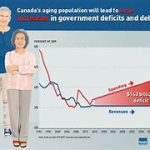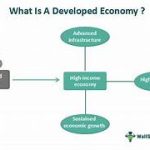Understanding the Relationship Between Inflation and Unemployment
Introduction
Inflation and unemployment are two fundamental economic indicators that significantly influence the stability and growth of national economies. Policymakers, economists, and financial analysts closely monitor these variables to assess economic health and formulate policies that balance price stability with job creation. The relationship between inflation and unemployment has been a subject of extensive study, particularly through the lens of the Phillips Curve, which suggests an inverse relationship between the two. This article explores the theoretical and empirical connections between inflation and unemployment, the implications for economic policy, and the challenges of managing both simultaneously.
1. The Phillips Curve: Historical Perspective
The Phillips Curve, introduced by economist A.W. Phillips in 1958, illustrates an inverse relationship between inflation and unemployment. The key findings suggest:
- Lower Unemployment Leads to Higher Inflation: As employment levels rise, wages increase, leading to greater consumer spending and higher prices.
- Higher Unemployment Leads to Lower Inflation: When unemployment is high, wage growth stagnates, reducing demand and slowing price increases.
While the Phillips Curve provided a useful framework for understanding inflation and unemployment trade-offs, its validity has been questioned, especially during periods of stagflation—where high inflation and high unemployment coexist.
2. Stagflation and the Breakdown of the Phillips Curve
During the 1970s, economies experienced simultaneous high inflation and unemployment, a phenomenon known as stagflation. This contradicted the Phillips Curve and suggested that other factors, such as supply shocks and inflation expectations, influence the relationship. Key lessons from this period include:
- Role of Supply Shocks: Oil crises in the 1970s demonstrated that inflation could rise due to external factors independent of unemployment trends.
- Expectations-Augmented Phillips Curve: Milton Friedman and Edmund Phelps introduced the idea that inflation expectations influence wage negotiations, shifting the Phillips Curve over time.
- Need for Policy Adjustments: Central banks adopted monetary policies targeting inflation rather than trying to manipulate unemployment levels directly.
3. The Natural Rate of Unemployment and NAIRU
Economists introduced the concept of the Natural Rate of Unemployment (NRU) and the Non-Accelerating Inflation Rate of Unemployment (NAIRU) to explain long-term inflation-unemployment dynamics:
- NRU: Represents the level of unemployment that an economy can sustain without triggering accelerating inflation.
- NAIRU: If unemployment falls below this rate, inflation accelerates; if it rises above, inflation decelerates.
These concepts emphasize that efforts to push unemployment below a certain level through expansionary policies may result in inflation without long-term employment gains.
4. Modern Views on Inflation and Unemployment
Contemporary economic thought recognizes a more complex relationship between inflation and unemployment, influenced by:
- Globalization: International trade and labor mobility impact domestic wage and price levels.
- Technological Advancements: Automation and digitalization influence job markets and productivity.
- Central Bank Policies: Monetary policy plays a crucial role in managing inflation while minimizing adverse effects on employment.
The Federal Reserve, European Central Bank, and other monetary authorities focus on inflation targeting while considering labor market conditions.
5. Policy Implications and Challenges
Managing inflation and unemployment requires a balanced approach:
- Monetary Policy Tools: Interest rate adjustments and money supply regulation to control inflation.
- Fiscal Policy Measures: Government spending and taxation policies to stimulate employment without excessive inflation.
- Structural Reforms: Labor market policies that enhance workforce adaptability and productivity.
Policymakers face challenges in achieving both low inflation and low unemployment simultaneously, especially during economic shocks and crises.
6. Case Studies and Empirical Evidence
Several case studies highlight the complex relationship between inflation and unemployment:
- The U.S. Experience (1980s-2000s): The Federal Reserve under Paul Volcker and later Alan Greenspan adopted tight monetary policies to control inflation, leading to short-term unemployment spikes but long-term economic stability.
- Japan’s Deflationary Struggles (1990s-Present): Japan has faced persistent low inflation and stagnation despite aggressive monetary policies, highlighting the difficulty of managing unemployment when inflation is too low.
- Eurozone Crisis (2008-2015): Countries like Greece and Spain experienced severe unemployment with deflationary pressures, demonstrating the challenges of economic recovery post-recession.
7. Future Outlook: Inflation, Unemployment, and Economic Growth
Looking ahead, emerging trends will shape the inflation-unemployment relationship:
- Impact of AI and Automation: Labor displacement may influence long-term unemployment trends.
- Climate Change and Supply Chain Disruptions: Environmental factors could introduce new inflationary pressures.
- Evolving Central Bank Strategies: Flexible inflation targeting and dual mandates will continue to evolve to balance economic stability.
Conclusion
The relationship between inflation and unemployment is dynamic, shaped by historical events, economic theories, and evolving policy approaches. While the Phillips Curve provides foundational insights, real-world complexities necessitate flexible and adaptive economic strategies. Governments and central banks must carefully balance inflation control with job creation to ensure sustainable economic growth and stability.


